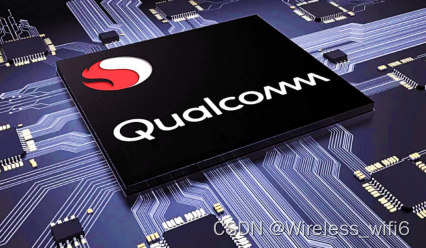Today, introduce the differences between the two wifi7 chips
Chip IPQ9514
IPQ9514 is a wireless network chip launched by Qualcomm, which is mainly used in home routers and small and medium-sized enterprise wireless network devices. Powered by Qualcomm's Krait architecture, the IPQ9514 features four processor cores with a dominant frequency of 1.4GHz, integrated with a dual-band 802.11ac Wave2 MU-MIMO 4x4 WLAN support for a maximum transfer rate of 1733 Mbps.
In addition, the IPQ9514 has Qualcomm's Adreno GPU built in, supports hardware-accelerated video and graphics processing, and integrates a variety of network security and management features, including virtual Private network (VPN) support, WPA3 encryption, intrusion detection and defense, device discovery and control, and more.
Overall, the IPQ9514 is a high-performance, fully functional, highly integrated wireless networking chip that can be used to design a wide range of high-performance home and enterprise networking devices.
It's compared to IPQ9554
IPQ9554 is another Qualcomm wireless network chip, also used in home routers and enterprise wireless network equipment. Compared to the IPQ9514, the IPQ9554 has a larger number of processor cores, up to eight, and a higher dominant frequency, up to 2.2GHz. The IPQ9554 supports both dual-band 802.11ac Wave2 MU-MIMO 4x4 WLAN and 802.11ax MU-MIMO 4x4 WLAN with a higher maximum transmission rate of 4800 Mbps.
In addition, IPQ9554 is more powerful in network security and management, and supports more protocols and functions, such as 802.11i, 802.11w, 802.11r, 802.11s, TLS/SSL, OpenVPN, GRE, L2TP, and so on. It also has higher level intrusion detection and defense, device discovery and control, QoS and other functions.
Overall, IPQ9554 offers more processing performance, higher network speeds, and more network security and administration capabilities than IPQ9514, but is correspondingly more expensive. The choice of chip should be based on the specific application requirements and budget.

802.11s is a wireless network protocol based on mesh. It uses a mesh topology to build a wireless network so that nodes can communicate with each other through multi-hop connections. Each node in the network can serve as either a router or a terminal device. This distributed structure can improve the reliability and fault tolerance of the network and avoid the impact of single point of failure.
In the 802.11s mesh network, nodes can dynamically join or exit the network. The network adaptively adjusts the routing path to provide better coverage and reliability. In addition, 802.11s supports coordination between multiple wireless access points, improving the throughput and performance of the entire wireless network.
In conclusion, 802.11s is a wireless network protocol based on mesh, which can be used to build a large, scalable, high reliability wireless network.






















 640
640











 被折叠的 条评论
为什么被折叠?
被折叠的 条评论
为什么被折叠?








